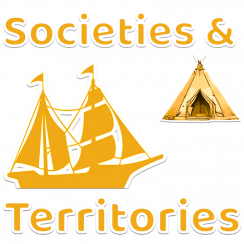Algonquian dwellings were called wigwams. Wigwams looked a little bit like large tents in the shape of a cone or dome. A wigwam could be 3 to 6 metres wide and 3 metres high. It was made of large wooden poles which were covered with skins and bark. Normally, a wigwam was large enough to house several families.
The ideal home for nomads
A wigwam was very handy for nomads like the Algonquians because it was easy to assemble, disassemble and transport. Once a band had chosen the location of its camp, it took the women about an hour to set up the wigwam. When the band moved, it took only the skins and bark because they were light enough to carry. New poles could be found at the next site where the camp would be set up.
Author: Alexandre Lanoix
See also: Traces of the past: A new discovery
Important concepts and big ideas:
[glossary slug=’nomad’]
[glossary slug=’tradenetwork’]
[glossary slug=’Habitation’]
[glossary slug=’divisionoflabour’]




